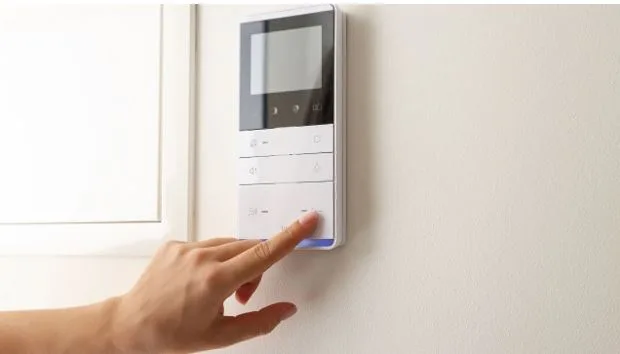A Comprehensive Guide by 3nh on What Is Delta E and How It Affects Color Accuracy in Manufacturing and Design
What is delta e? This question is central to professionals working with color in fields like manufacturing, printing, textiles, and design. Delta E is a metric that quantifies the difference between two colors, helping ensure precise color matching and quality control.
In this comprehensive guide, 3nh, a leading company specializing in color measurement technology, explains what delta E means, how it is calculated, and why it plays a vital role in achieving color accuracy. This knowledge is essential for anyone wanting to maintain consistency and excellence in color-sensitive projects.
Understanding What Is Delta E and Its Basic Definition
At its core, what is delta e refers to the numerical value that represents the perceived difference between two colors. The term “delta” means change, and “E” stands for color difference. The smaller the delta E value, the closer two colors are visually.
In practice, delta E helps determine whether a color match is acceptable to the human eye or if it requires adjustment. For example, in product manufacturing, a delta E below a certain threshold is often the goal to guarantee color uniformity across batches.
How Delta E Values Are Calculated Using Color Spaces
To comprehend what is delta e, it is important to know that it is derived from color spaces like CIELAB. The CIELAB color space represents colors in three dimensions: L* for lightness, a* for green-red spectrum, and b* for blue-yellow spectrum.
The delta E calculation measures the distance between two points (colors) within this space. The result is a single value expressing the color difference. Different formulas exist to calculate delta E, including Delta E 1976, Delta E 1994, and Delta E 2000, with the latter being the most refined for perceptual accuracy.
Why Understanding What Is Delta E Matters in Manufacturing and Design
Understanding what is delta e is crucial because color consistency is a key quality attribute. Industries such as automotive, textiles, plastics, and paints rely heavily on color matching to meet standards and consumer expectations.
Without a standardized way to measure color differences like delta E, subjective assessments could lead to costly errors and dissatisfied customers. Utilizing delta E enables manufacturers and designers to objectively evaluate color accuracy and improve product quality.
Real-World Applications of Delta E in Quality Control
In practice, what is delta e guides decisions in quality control processes. For instance, paint manufacturers use delta E values to confirm that new batches match a master sample. Similarly, textile producers monitor delta E to ensure fabric colors remain consistent over production runs.
3nh instruments provide reliable delta E measurements, allowing users to detect even subtle color deviations. This ensures corrections can be made promptly, preventing defective products from reaching the market.
How 3nh Integrates Delta E Measurements in Color Management Solutions
3nh, a pioneer in color measurement technology, designs devices that simplify understanding what is delta e for professionals. Their spectrophotometers and colorimeters deliver precise readings in CIELAB color space, automatically calculating delta E values.
These tools help users quickly assess color differences and maintain color quality across various materials and industries. The intuitive software and portable devices from 3nh support fast, reliable color matching wherever it’s needed.
Factors That Influence Delta E Values and Color Perception
Several factors influence delta E readings and the perceived color difference, making it important to understand what is delta e in context. Lighting conditions, surface texture, and material properties can affect how color is measured and seen.
Therefore, 3nh recommends standardized measurement conditions to minimize variability. Proper calibration and consistent lighting environments contribute to accurate delta E results, supporting better color communication and production consistency.
Konica Minolta CR-10 Plus vs. 3NH NR60CP
The Konica Minolta CR-10 Plus is a popular budget / entry-level colorimeter, due to its simplicity and cost.
Our equivalent: Our equivalent is the 3NH NR60CP. It is a portable, high-test, portable colorimeter integrated with a large, clear display and an intuitive, easy-to-use interface. NR60CP is very repeatable and accurate. This makes it an ideal option for businesses lacking basic quality color checks without learning.
Important Features to Note in 3NH NR60CP
8°/ d optical geometry
Accurate spectra &Lab data, for color matching & delivery;
CIE LAB,LCh,XYZ, CIE RGB,CIE LUV Color Space
Φ8mmflat aperture; Φ4mmtip aperture
2.8-inch TFT screen for easy operation
Reliable repeatability (ΔEab ≤0.03) and inter-instrument agreement (ΔEab ≤0.4)
Large storage capacity, Approx. 20,000 data;
On-site inspections, providing cost-effective color measurement solutions for entry-level applications
Tips for Interpreting Delta E Values Effectively
Knowing what is delta e is only useful if users understand how to interpret the values. Typically, a delta E value below 1.0 is considered imperceptible to the human eye, while values between 1 and 3 may be acceptable depending on application.
Higher delta E values indicate noticeable color differences that usually require corrective action. By setting tolerance limits based on delta E, businesses can maintain product standards and customer satisfaction effectively.
Common Misconceptions About What Is Delta E in Color Science
Despite its importance, there are common misconceptions regarding what is delta e. One is that a low delta E value guarantees perfect color matching regardless of context, which is not always true due to human perception variability.
Additionally, not all delta E formulas account equally for visual perception nuances. Understanding which delta E calculation method to use depending on the application is crucial for accurate color assessment.
Frequently Asked Questions About What Is Delta E and Its Usage
What is delta e and why is it important?
Delta E measures the difference between two colors, ensuring color accuracy and consistency in various industries.
How low should delta E be for a perfect match?
Generally, a delta E below 1.0 is considered imperceptible and ideal for critical color matching.
Does lighting affect delta E measurements?
Yes, lighting and measurement conditions significantly impact delta E results and must be standardized.
Can delta E be used for all materials?
Delta E is applicable to most colored materials, but surface properties can influence measurements.
How does 3nh help with delta E measurements?
3nh provides advanced color measurement instruments that deliver accurate delta E values for quality control and color matching.
Conclusion: Mastering What Is Delta E to Achieve Superior Color Control
In summary, understanding what is delta e is essential for anyone working with color. It offers a scientific, objective way to measure and communicate color differences, vital for manufacturing, design, and quality assurance.
With solutions from 3nh, professionals gain access to reliable tools that simplify delta E measurement, helping them maintain color accuracy and meet demanding standards. Embracing delta E empowers businesses to deliver consistent, high-quality products that satisfy even the most discerning customers.






